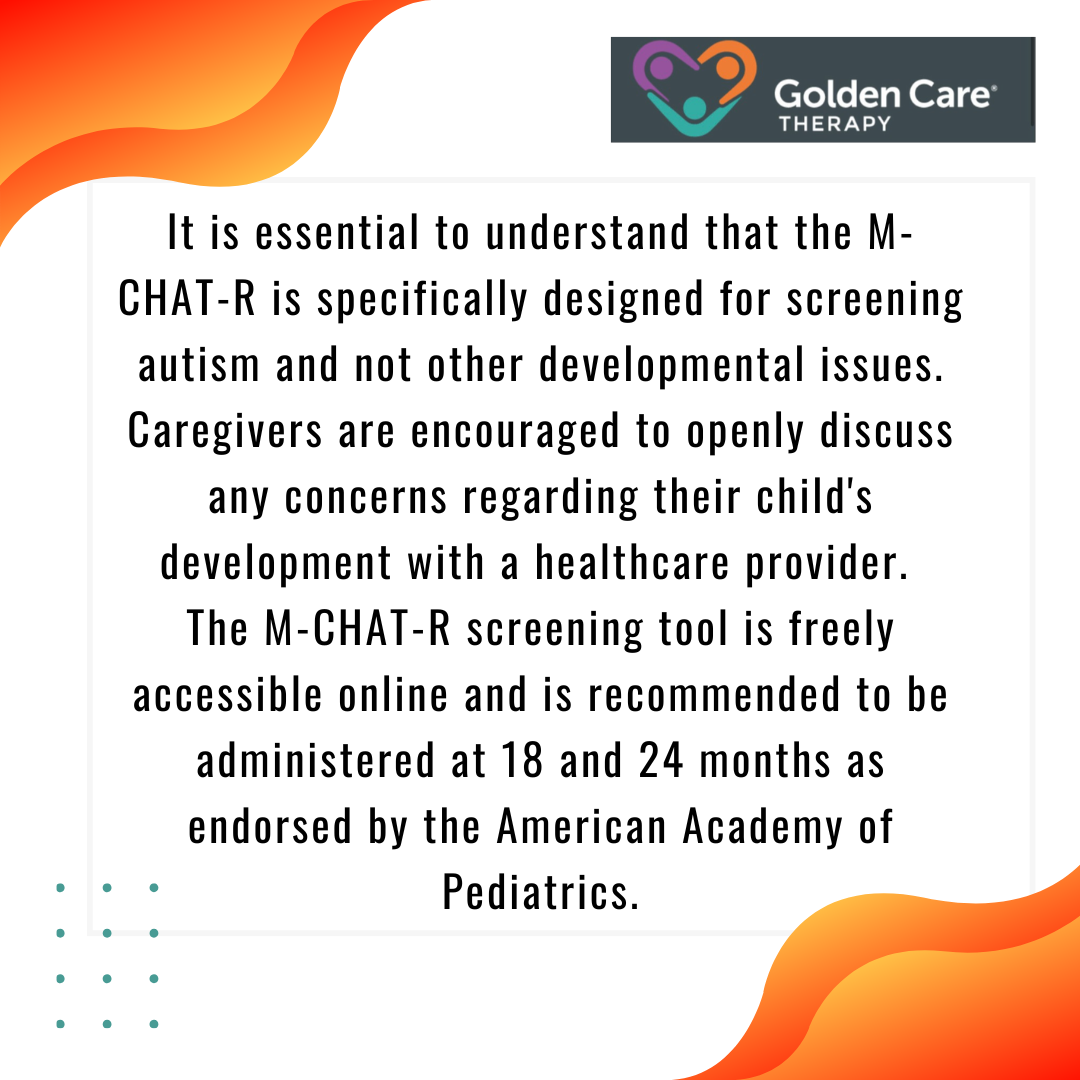Early detection of autism can make a big difference in a child’s development, giving them the support they need at the right time. The M-CHAT screening tool plays a crucial role in identifying children who may be at risk of autism spectrum disorder. By answering a few simple questions, parents and caregivers can help doctors understand how a child is progressing and if further evaluation is necessary.
This simple tool is a first step towards ensuring that children receive the early interventions that can help them thrive.
What’s the Purpose of the M-CHAT Screening Tool?
The Modified Checklist for Autism in Toddlers, Revised (M-CHAT-R/F)serves as a valuable instrument for assessing children’s development and aiding in the early identification of potential autism spectrum disorders in toddlers. This screening tool consists of 20 questions that are administered by parents or caregivers.
The information gathered through this process can help healthcare providers in evaluating a child’s behavior and developmental milestones.
The M-CHAT-R/F screening tool plays a crucial role in the early detection of autism spectrum disorders, which is a vital public health priority globally. Timely identification of young children with autism allows for the implementation of early interventions.
Research has shown that early interventions lead to better symptom improvement and long-term outcomes for individuals with autism.
The American Academy of Pediatrics recommends the administration of the M-CHAT-R/F screening tool at 18 and 24 months of age for all children. By conducting this screening at the recommended ages, caregivers and healthcare providers can identify red flags early on and initiate appropriate interventions if necessary.
The M-CHAT-R/F screening tool provides a structured approach to flag potential concerns related to autism in toddlers between 16 and 30 months of age.
To enhance the accuracy of the screening results, it is advised to follow up the initial 20 questions with a Follow-Up Interview. This additional step helps improve the specificity of the screening process and enables caregivers to address their specific concerns, potentially reducing unnecessary referrals and ensuring a more targeted approach to intervention strategies.
How to Administer M-CHAT-R/F
The M-CHAT-R/F screening tool is designed to assess the risk of autism in young children. The revised version, M-CHAT-R/F, has proven to reduce the false positive rate and identify more autism cases compared to the original M-CHAT, especially when utilized during routine pediatric check-ups.
Users must acknowledge and adhere to specific guidelines when downloading the M-CHAT-R/F files from the official website due to copyright restrictions.

To enhance the specificity of the screening process, conducting a Follow-Up Interview in addition to the initial 20 questions is advisable. This interview allows healthcare providers to delve deeper into specific caregiver concerns, potentially reducing unnecessary referrals and ensuring a more accurate evaluation of autism risk.
Early identification of autism in young children is a global public health priority due to the positive impact of early interventions on long-term outcomes. By adhering to this screening schedule, caregivers and healthcare providers can identify potential risk factors early on and initiate appropriate evidence-based interventionsto support the child’s development.
How to Interpret M-CHAT-R/F Results
To interpret the results of the M-CHAT-R/F screening tool means to understand the implications of different risk scores. The tool is specifically designed to screen for autism spectrum disorder and is not intended for diagnosing other developmental issues.
Here, we will explore the significance of low-risk scores, medium-risk scores, and high-risk scores in the context of autism screening.
Low-Risk Scores
A low-risk score on the M-CHAT-R/F suggests that the child is currently showing behaviors that are not indicative of autism.
However, it is important to note that a low-risk score does not rule out the possibility of developmental concerns entirely. It is still recommended to consult with a healthcare provider, especially if the child is younger than 24 months or if there are other developmental or behavioral red flags present.
In some cases, a child may exhibit behaviors that do not trigger a high-risk score but may still benefit from close monitoring and potential rescreening to ensure early detection of any emerging issues or delays in development.
Medium-Risk Scores
A medium-risk score on the M-CHAT-R/F signals that there are certain behaviors or characteristics that warrant further evaluation. If a child receives a medium-risk score, it is crucial to follow up with a healthcare provider for a comprehensive assessment.
Additional screening or evaluations may be recommended to delve deeper into the child’s developmental profile and identify any areas of concern.
For children with medium-risk scores, seeking early intervention services could be beneficial in addressing any potential developmental delays or challenges. Early intervention has been shown to improve outcomes for autistic individuals and can pave the way for tailored support and interventions.

High-Risk Scores
A high-risk score on the M-CHAT-R/F indicates a higher level of concern regarding the child’s behavior and development. Children who receive a high-risk score should undergo a full evaluation by a qualified healthcare professional, such as a developmental pediatrician or child psychologist, to determine a formal diagnosis and develop a plan for early intervention services.
Starting early intervention services promptly for children with high-risk scores can significantly impact their long-term outcomes. Early interventions are designed to address specific needs, enhance social and communication skills, and promote overall development in children with autism.
Cultural Validity of M-CHAT-R/F
The cultural validity of the M-CHAT-R/F is an essential aspect to consider when implementing screening for autism in diverse populations. The tool should be sensitive to cultural differences, ensuring that it accurately captures the behaviors and characteristics associated with autism across various cultural backgrounds.
It is crucial to adapt the screening process to account for cultural nuances and differences in language, communication styles, and social norms. By ensuring that the M-CHAT-R/F is culturally valid, healthcare providers can effectively identify children at risk for autism, regardless of their cultural background.
Research has shown that the effectiveness of the M-CHAT-R/F in identifying children with autism is consistent across different populations.
Considering cultural factors when implementing the M-CHAT-R/F screening tool is essential for promoting equity and inclusivity in autism screening programs. By respecting and addressing cultural differences, healthcare providers can ensure that all children, regardless of their cultural background, receive the necessary support and resources for their developmental needs.
Conclusion
The M-CHAT screening tool plays a crucial role in identifying early signs of autism, which can lead to quicker interventions and better support for children. Catching these signs early helps parents, caregivers, and doctors provide the necessary resources and therapies that can make a big difference in a child’s development.
Early detection opens doors to a brighter future, where children can thrive with the proper care and support tailored to their unique needs. At Golden Care Therapy, we offer specialized autism services in New York, providing personalized ABA therapy that helps children develop essential skills and reach their full potential.
Our team is dedicated to creating a nurturing environment where every child receives the attention they deserve. Contact us todayto learn more about how we can support your child’s journey to success.
Sources:



